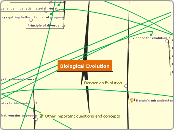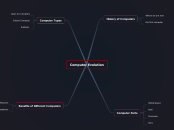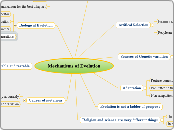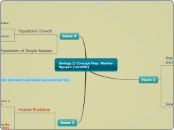Biology
Plants
phloem
Phleom loading
sink
other processes
storage
growth
metabolism
loading carbon into the pholem
transport to different sinks in plants
found in external root cylinders
stores
water
in charge of
distribution of organic nutrients
transportation
vascular tissue
transport of water
cohesion
cohesion-tension theory
3.then pulled up the plant stem
2.water molecules in xylem under tension
1. water pulled through a leaf
hydrogen bonds make water molecules stick
water concentration different from solute concentration
water moves in/out a cell
moves from high to low concentration
water molecules diffuse across a membrane
transpiration
water evaporates from living surface
Properties of cell membrane
Cell transport
active transport
actively pump compounds to direction wants to go
use another class of membrane proteins
to transport against concentration gradient
movement of material using energy
endocytosis
pinocytosis
molecules dissolved to liquid
necessary for cell
cell drinking
phagocytosis
cell engulfs
particles into its cytoplasm
other cells
macromolecules
cell eating
bulk transport
secretory vesicle
from Golgi body or ER
Move large amounts of material out/in cell
facilitated diffusion
ions cant pass through simple diffusion
spontaneous passage of molecules/ions
across the membrane
osmosis
reactions
cell has equal concentration of water
isotonic
same concentration
area of high to low area of water concentration
movement of water down concentration gradient
special diffusion
simple diffusion
no energy to move particles
particles move at equal rates
from high to low concentration
movement of particles
from area of high concentration to low concentration
cell membrane
asymetrical structures
fluid like structures
all cells/organelles surrounded by a membrane
consists of phospholipid bilayer
held by non-covalent interactions
thin enclosures
forms closed boundaries
made of
carbohydrates
proteins
lipids
Impact of the cystic fibrosis
clog the ducts of the pancreas
cause decrease in secretion of enzymes
from the pancreas, normally digest food
block normal absorption of nutrients/fat in intestines
causes
trouble gaining weight
slow growth
poor digestion
Undigested food cause
blockages
constipation
gas
cramping
pain
prevents enzymes reaching small intestine
to digest food
changes in electrolyte transport system
cells absorb too much sodium/water
environmental impact on the respiratory system
coal workers
exposure to coal dust
hard to breathe
scarring in lungs
black lung disease
coal dust inhaled
smoking
secondhand smoking
affect lung function
destroys lungs structure
toxic substance
triggers inflammation
chemicals
side effects:
sore throat
nasal congtestion
sneezing
chemical filled air
chlorine
noxious gas
leads to lung disease
Air pollution
exposure to it
sometimes premature death
stroke
heart attacks
risk of lung cancer
chest pain
asthma
wheezing
coughing
shortness of breath
can irritate airways
Factors affecting Varriation
important genes themselves dont cause disease
genetic disorders caused by
“the cystic fibrosis gene
variants alter/eliminate gene’s function
prevent embryo from surviving until birth
chromosomal errors
Rings:
Translocations:
Deletions:
Inversions:
Structural Abnormalities:
Conditions
Turner’s Syndrome
Klinefelter Syndrome
Down Syndrome
Edwards Syndrome
Patau’s Syndrome
zygote formed from gamete not experienced non-disjunction
resulting offspring have extra/missing chromosomes
Chromosomal Abnormalities
occur when an error in cell division
non-disjunction
Non disjunction can be in both Meiosis I/Meiosis II
unbalanced gametes in translocation
result in inviable embryos
higher frequency abnormal meiotic disjunction
Translocation Heterozygotes
failure of homologous chromosomes disjoin correctly
failing to separate correctly
meiosis
Mendel's laws
second law
independent assortment
dihybrid cross
occurs during prophase 1 of meiosis
alleles of different genes
independently segregate from one another
first law
monohybrid cross
alleles can be
heterozygous
homozygous
offspring one copy from each parent
during formation
allele pair separate from each other
each gamete receives1 pair
seperation of two copies
of gene during formation of gametes
endosymbiotic theory
eukaryotic creatures made of creatures
endosymbiont
organism lives in another
Eukaryotic cells evolved when multiple cells joined together into 1
speciation
co evolution
one species evolves
in response to another
convergent evolution
analogous features
unrelated species
similar phenotype
live similar environment
divergent evolution
evidence
homologous features
2/more species
evolve different traits
diversifying selection
reproductive barrier
post zygotic barriers
hybrid breakdown
two hybrids mate
offspring weak/sterile
crossed species viable/fertile
hybrid sterility
infertile
gamete not produced
hybrid inevitability
unlikely live long
fertilisation successful
between related species
zygote/embryo
fails develop properly
pre zygotic barriers
gametic isolation
gametes die
before uniting gametes
mechanical isolation
structural differences
stop gamete exchange
behavioural isolation
little/no sexual attraction
habitat isolation
breed different habitats
temporal isolation
breeding different times
reproduction happens
before zygote happens
sometimes dont occur
stop species
from producing
viable hybrid offspring
fertile
modes
sympatric
split
share same location
new species
can origniate
same area of parents
differnt gene pools
allopatric
diversification of
common ancestrol species
into adapted species
aquatic species
separated
from construction dams
sncestral population
seperated
from geological barrier
formation new species
from old species
individual
potential interbreed
produce
viable offspring
patterns of natural selection
directional selection
distribution curve of phenotype
towards extreme
favours phnotypes
to an extreme
stabilising selection
favours intermediate phenotype
acts against variants
distributive selection
favours extreme range phenotype
rather than intermediate
results
elimination extreme phenotype
Natural/artificial selection compared
artificial selection
breeding of animals
breeder chooses traits
produces varieties of organisms
Gray tree frog
on bark
predator can easily see
reproduction decreases
blend with dark areas
hard for predator see
biological diversity
organisms adapt/change
helps organism survive
better in environment
not so adapted
reproduce/survive less
better adapted to enviorment
survive/reproduce more
history
current theory
charles darwin
evolution takes natural selection
main idea
environment combination of
environmental influence
random variations
proposed mechanism
related by decent
not created in present
evolved from ancestral species
old theories
jean baptiste
inheritance acquired characteristics
organisms have
pass trait to offspring
uses organ to grow
no organ, its small
perfection
complexity
William palley
beilived
organisms had a maker
god
sir Charles Lyell
uniformitarianism
geological change
geological time
millions of years old
gradual
slow
Cuvier theory
James Hutton
theory of actualism
geological formations of land forms
Baron Georges
catastrophism
extinct life forms
replaced with new species
global castrophes
widespread extinctions
pre darwinian
adaptation
work of creator
variations imperfections
decides
structure organisms
function organisms
species specially created
# of them same
no change
over several generations
characteristics change
theory
living things evolved
simple forms
change in genes
takes many generations
organisms charactistics changed
mechanisms
more genetic variation
greater selective advantage
greater diversity
change that occurs
in the DNA
randomly introduces
new alleles in population
gene flow
change allele frequencies
in both populations
through flow or movement
of genes
two different inbreeding populations
different allele frequencies
movement of alleles
from one population
to another
from migration of individuals
non random mating
increases proportion
of homozygous in a population
dosent affect
alleles frequencies
select mates
based on phenotype
sexual selection
choice females make
for mates
competition between males
through visual display
through combat
genetic drift
natural selection
you forgot to state that the gradual change in allele frequencies may lead to speciation.
selection of individuals
certain traits
better suited survive
reproduce other populations
likely reproduce/survive
than others
wide range of
some produce
more offspring than others
genotype
phenotype
sources of variation
immigration of genes
new organisms
join population
form changing
allele frequencies
transfer of genes
between different population
through migration
recombination
genetic diversity
differences DNA sequences
different organisms
DNA broken
recombined and produce
new combination alleles
mutation
somatic mutations
in body cells
not passed on
DNA copying mistakes
during cell division
exposure
mutagens
ionization radiation
change DNA sequence
Darwin/Wallace evidence
Both researchers
created theory
mostly known as Darwin theory
Wallace
discovered many specimen
distribution of animals
divides Asian/Australian animals
living things
change over time
Darwin
proposed
species change over time
share common ancestor
kingdoms
Protista
algae
amoeba
or heterotrophic
can be autotrophic
look like blob of slime
plant cell like wall
animal cell like membrane
one or many nuclei
no tissues/organs
sometimes a colony cell
Archaebacteria
thermophiles
halophiles
methanogens
few species photosynthetic
capture the energy of sunlight
derive their energy and nutrients
from breaking down molecules in the environment
chemotrophs
cell structure
Archaellum
Tail-like structures assist in the movement
Pilus
cell attachment
Ribosome
protein synthesis.
Cell wall
structure/protection from outside environment
Cell membrane
separates cell from outside environment
Cytoplasm
Cellular fluid
Plasmid
DNA physically separated from chromosomal DNA.
Nucleoid
contains its DNA
semi rigid cell wall
protects form environment
lacks:
membrane
nucleus
single cell organism
Eubacteria
Salmonella
Escherichia Coli
take food from outside sources
heterotrophs
Cell structure
DNA not in a nucleus
lack cell organelles
enclosed by a cell wall
made of cross linked chains
lack nucleus
single celled
Cell type
circular chromosome
prokaryotic
Fungi
mildews
sac fungi
mushrooms
molds
yeast
Nutrition
considered heterotrophs
cant produce own food
get nutrients from:
dead matter
animals
beneficial for vegetarians
decompose deceased organic compounds
from organic compounds
thread like filaments
hyphae/hypa
dived into cells (septa hyphae)
compared to bacterial plasmids
loops of DNA
bound nucleus
has membrane
eukaryotic/multicellular organism
Animalia
cows
feed of plants/animals
cant produce own food (heterotrophs)
no cell wall
has membrane bound nucleus/organelles
enclosed by plasma membrane
eukaryotic cells
multicellular
Plantae
liverworts
mosses
kelp
seaweed
nutrition
considered autotrophic
create nutrition through photosynthesis
structure
nucleus/chloroplast also there
regular plant cell look
cell wall surrounding cell membrane
cell type
have tissues/organs
eukaryotic/multicellular organisms
Vaccines
vaccines trigger
cell mediated response
humoral response
B memory cells
remembers antigen exposed
remembers antibody that worked on it
B-cells
produce antibodies
Hyper T cell
remembers antigen
Cytotoxic T -cell
destroys infected cells through antigens
attenuated virus
without healthy immune
may have infection
grown in lower body temps
Dead virus
capsid injected with chemicals
cause inflammation
exposed to chemicals
exposes immune system to virus
allows body to fight it off
weaken form of a virus
Characteristics of viruses
mutations
COVID-19
Sars-COV-2
HIV
some will hurt bacteria
have no affect
or make it stronger
are mistakes
Lysogenic cycle
7. lysis
6.assembly
5.replication
4. latency/incubation
3. intergration
DNA inserts into hosts DNA
2. entry
1. attachment
Lytic cycle
5.lysis/release
4.assembly
3.replication
2. insertion/entry
genetic info takes over control of host cell
1. attachment/absorption
Classification
shape/structure of virus
method of reproduction
type of genetic material
type disease virus causes
Structure/shape of capsid
Host range
limited host species virus can affect
organisms the virus infects
Types of viruses
RNA
single stranded RNA in capsid
double stranded DNA in capsid
Host specificity
kingdom specific
may/may not be species specific
all kingdoms can be infected
Viral structure
Virus cell
enclosed in an evelope
nucleic acid core
contains DNA or RNA
contains capsid
reproduces inside host cell
outside host cell
viruses inactive
has spikes to attach
cant eat/grow on their own
cant move on their own
very small
non cellular
non living structures
made of genetic material/protein
invades living cells
Linnean classification system
7 levels of classification
Jhon Ray
classifeid over 19000 species of
four footed animals
birds
first to use term species
St.Augustine
middle ages:
classified as what they produce
wood
vegetable
fruit
animal classification
useless
harmful
useful
Carl Linnaeus
Greatest discoveries
the "economy of nature"
first naturalist to describe food chains
ecology around natures concept
collection of specimen
invaluable resource of taxonomy
compromise specimen of :
insects
shells
fish
plants
higher level classication
7 seven levels of taxa
binomial nomenclature
organism: two part scientific names
biological classfication
Taxonomy
history of taxonomy
1000 species grouped by kingdoms
grouped animals by habitat
identified by complexity
assigning organism to a group
naming an organism
system based on organism features:
structural
physical
sweetish naturalist
Evidence
DNA
relationship from DNA
simialr pattern of DNA
gene sequences
genes for traits change by mutation
from their offspring
species pass their traits
dofgs related to bears
whales related to ungulates
inhertied from the acenstor
anatomy
analogous structures
different species evolve , different origin
no common evolutionary origin
homologous structures
homologous hair
found in mammals
similar structural elements
similarities
functional similarity
species not closely related
don't share common ancestor
bones support birds wings
material makes up insets wings
lower limbs of
human/
frog
perform same function
horse
muscles
ligaments
number of bones
blood vessels
differences
differ on organisms
environment
lifestyle
different functions
vertebrate forelimbs
contain same set of bones
organised similar ways
common ancestor
used for various functions
flying
swimming
running
Embryology
similarities of embryos
related species
share adult features
common ancestrol origin
different organism
similar embryonic development
example
vertebrata embryos paired pouches
pre birth stages in organism
determine evolutionary relationships
fossil records
types of fossils
transitional fossils
shares characteristics
common to two seperate groups
links between groups of organism
mold fossils (imprints)
fossil makes a mark
image is backwards
hollow fossil
shows
skin/fur
embryos
claws
teeth
leaves
true form fossils
parts of organism
replaced by minerals
displaced minerals harden
become rock
not formed unsing impression
limbs
torsos
fingers
heads
trace fossils
organism living
how it hunted
how it rested
examples
burrows
nests
footprints
tooth marks
information on traces
preserved remains/traces and activity
history of life
species alive in the past
young layers of rock
chronological order of rock layers
not all aorganism in fossil record
Subtopic
this is the risk of using images that you don't add to this yourself. this one is missing.
oldest fossil in deepest layer
biogeography
splitting of Pangea
Earth's continents large land mass
likely organisms lived on Pangaea
organisms split up
fossils dated/found
in multiple continents
with same age
past/present geographical distribution
of species populations
factors determine those patterns
species
evolved in one location
biogeography suppots hypothesis
closely related species found in same habitat
animals resemble those in close continents
lizards found on the canary islands
similar to lizards found in west africa
finches evolved
from mainland migrants
adaptive radiation
geographically close enviorments
populated by realted species
cacti native to deserts of noth/south america
not found naturally in deserts
rather locations geographically separate
same species
in neighbouring continents
darwin and Wallace hypothesized









